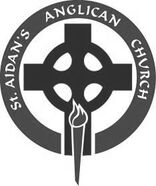|
January 25th – Les Kovacs
It is very encouraging to see how well our invitation was received by our parish members to submit their questions to the Sunday preacher. We’ve received several excellent questions this week, too many to answer all of them. I’ve picked three and hope the answers below will be helpful to you. Question 1: Can you suggest a simple and suitable explanation of the Trinity for a "baby" Christian? The short answer is that there is no simple explanation for the Holy Trinity that would provide the full answer. It is also true, however, there is also no long explanation that would be able to provide the full answer, either. The complexity of the infinite God simply cannot be fully grasped by our finite human ability to understand. This is not an attempt to evade the question. Whenever we think that we have fully understood our God, we have actually put Him into a box defined by our own limited imaginations, and He is so much more than we can imagine. At various times people have tried to use different analogies to help explain the Trinity. For example: He is like water which can exist as ice, liquid and steam. Or He is like a man who is a father, a son and an uncle. Or He is like a three-leaf clover with three different, identifiable leaves. These analogies come close, but none of them adequately describe the Trinity. - Water can exist as ice, liquid or steam but not at the same time, whereas the Father existed in heaven at the same time as Jesus existed on earth. - A man can be a father, a son and an uncle, but he is still only one man, but Scripture is clear that God the Father is distinct from God the Son, and they are both distinct from God the Holy Spirit, yet they are all One. - The clover may be three segments within the one leaf, but each leaf is not a full expression of the whole. Yet the Bible tells us that God the Father and God the Son and God the Holy Spirit are each fully God, not just a part of God. In the introduction to my sermon, I said that the mystery of the Triune God is one of the most important truths of scripture. However much we may study God, there will always be some aspect of Him that will remain a mystery to us. Until we are with Him in eternity, God will reveal Himself to us to the extent that we are able to understand. In the meanwhile, the best that we can do for the parts we don’t understand is simply to sit in the wonder and adoration of our Triune God. Question 2: Jesus was without sin. Why didn’t He throw the first stone at the adulterous woman? Jesus came into the world to save sinners. He came offering redemption to a broken people. I used the story of the woman caught in adultery to illustrate the hope of deliverance from our sins that Jesus offers. Jesus knew that the Pharisees had already judged the woman guilty, and they wanted to see what He would do. Although they said she was caught in adultery, they offered no proof nor brought any witnesses to her adultery, so this was an unsubstantiated accusation. It was a set-up. There was no basis in the Law for Jesus or anyone else to stone the woman, and His reply to them was a challenge. Who were they, who were still living in their own sins, to judge this woman? Equally important to note is that Jesus did not declare her to be innocent. What He did do was to tell her to go and sin no more. Rather than condemn her, Jesus offered compassion and mercy. What we see in this story of Jesus and the adulteress is that God has provided a deliverance for us from the condemnation of death for our sins through the grace found in Jesus Christ. And with this deliverance, we are instructed to repent and turn away from our sinful ways. In this way, He has provided a way for us to be reconciled to Himself and participate in His new creation. Question 3: Did Jesus absolve us of our sins throughout His life, or only on the cross? Jesus’ sacrifice on the cross was sufficient atonement for all of humankind’s sins. He died for all of us. Matthew 26:27-28, “Then he took a cup, and when he had given thanks, he gave it to them, saying, “Drink from it, all of you. This is my blood of the covenant, which is poured out for many for the forgiveness of sins.” However, there are several instances in the Gospels of Jesus forgiving specific people of their sins during His ministry on earth. One example was when Jesus healed the paralytic man in Matthew 9:1-8. When the man was brought to Jesus for healing, Jesus said to him, ““Cheer up, friend! Your sins are forgiven.” This didn’t sit well with the religious leaders who felt He was blaspheming God by claiming to forgive sins, to which He replied that the authority to forgive sins on earth had been given to Him. As proof, He commanded the man to pick up his stretcher and go home, which of course he did. Another example is found in Luke 7:36-50. Jesus was at the house of Simon, a Pharisee, when a “sinful” woman began washing Jesus’ feet with perfume. When Simon began to think ill of her, Jesus told him the parable of two people who owed money to a moneylender. When neither of them could repay the money, the moneylender forgave them their debts. Jesus then asked Simon which of the two borrowers would love the moneylender more, and Simon correctly answered the one who had owed the larger sum. Jesus then compared the hospitality He had received from Simon (very little) versus the attention paid to Him by the woman (a great deal). He then turned to the woman and said, “Your sins are forgiven”, followed by, “Your faith has saved you; go in peace.” In both these instances, it was the faith of the people in Jesus which had prompted Him to forgive their sins. Faith in Jesus Christ is the key to forgiveness. That is true of the people He forgave while He was still on earth, and it is true today. Only those who accept Him as their personal Saviour will receive the gift of salvation. It is for these whom He died on the cross. As for those who do not accept His free gift, well, I guess they’ll have an interesting meeting when He returns. Praise be to God the Father, God the Son, and God the Holy Spirit! Follow-up to “These Three Are One” sermon by Rev. Kim Salo, preached on January 15
Bible readings: Matthew 28:16-20; 2 Corinthians 13:11-14 #1. Read 2 Cor. 13:11-14 Paul’s 2nd letter to the church at Corinth ends with these words: “May the grace of the Lord Jesus Christ, and the love of God, and the fellowship of the Holy Spirit be with you all.” Considering that the church at Corinth was full of problems, how is Paul’s final prayer in his letter to them appropriate? Which part of this verse do you need most right now: grace, love, or fellowship? #2. Read Matthew 28:16-20 Christians are baptized “in the name of the Father, and of the Son, and of the Holy Spirit.” Why are we baptized into just one “name,” instead of three “names”? When you consider that these words were used at your own baptism, what does that mean to you now? #3. When you pray, do you pray to the Father, to Jesus, to the Holy Spirit, to all three, or just to God? Has that ever changed in your life, say from addressing prayer to God, to praying to the Father, or to Jesus Christ? Why do so many prayers end with something like, “through Jesus Christ our Lord,” or “in Jesus name”? #4. How would you begin to explain who God is to a non-Christian who asked you what you believe? In particular, how would you begin with a Muslim? A Hindu? An atheist? |
Preachers BlogIn 2024, each week's blog is a follow-up reflection written by the preceding Sunday’s preacher to dig deeper into the sermon topic and explore engaging discussion questions. Archives
June 2024
Categories |
St. Aidan's Anglican Church
At St Aidan's, it's our desire to know our Real God,
to grow as a Real Church and
to live Real Lives for Him.
to grow as a Real Church and
to live Real Lives for Him.
St Aidan’s Anglican Church
274 Campbell Street | Winnipeg, MB R3N 1B5
Phone: 204.489.3390 Email: [email protected]
274 Campbell Street | Winnipeg, MB R3N 1B5
Phone: 204.489.3390 Email: [email protected]


 RSS Feed
RSS Feed
